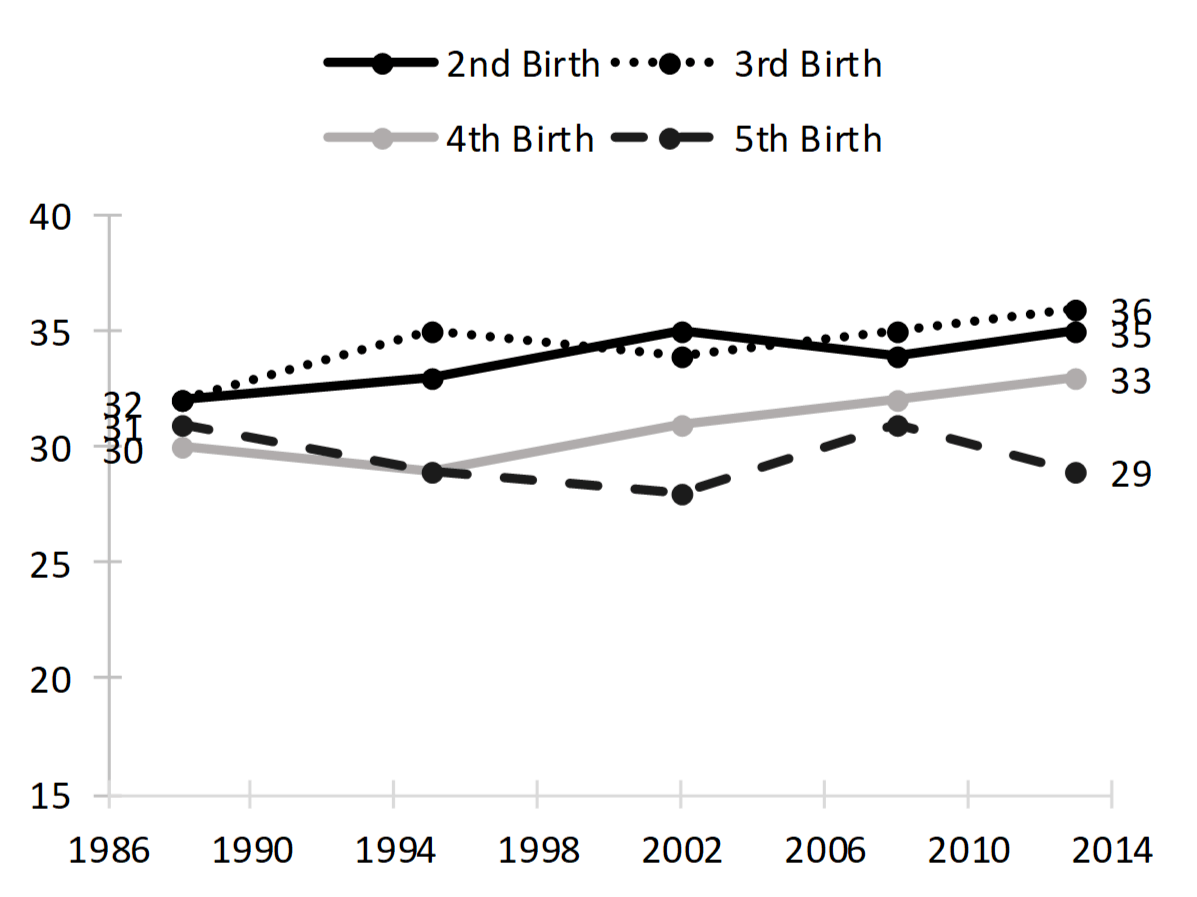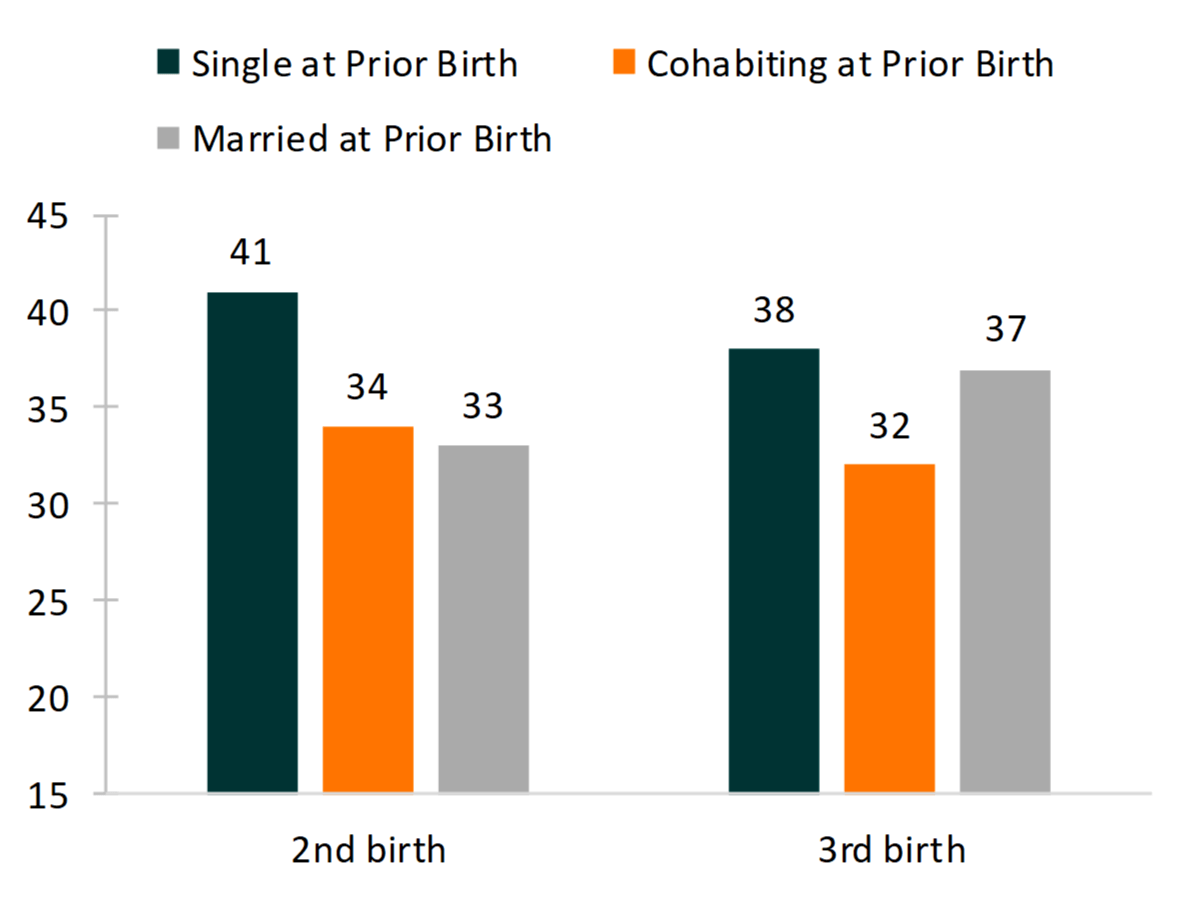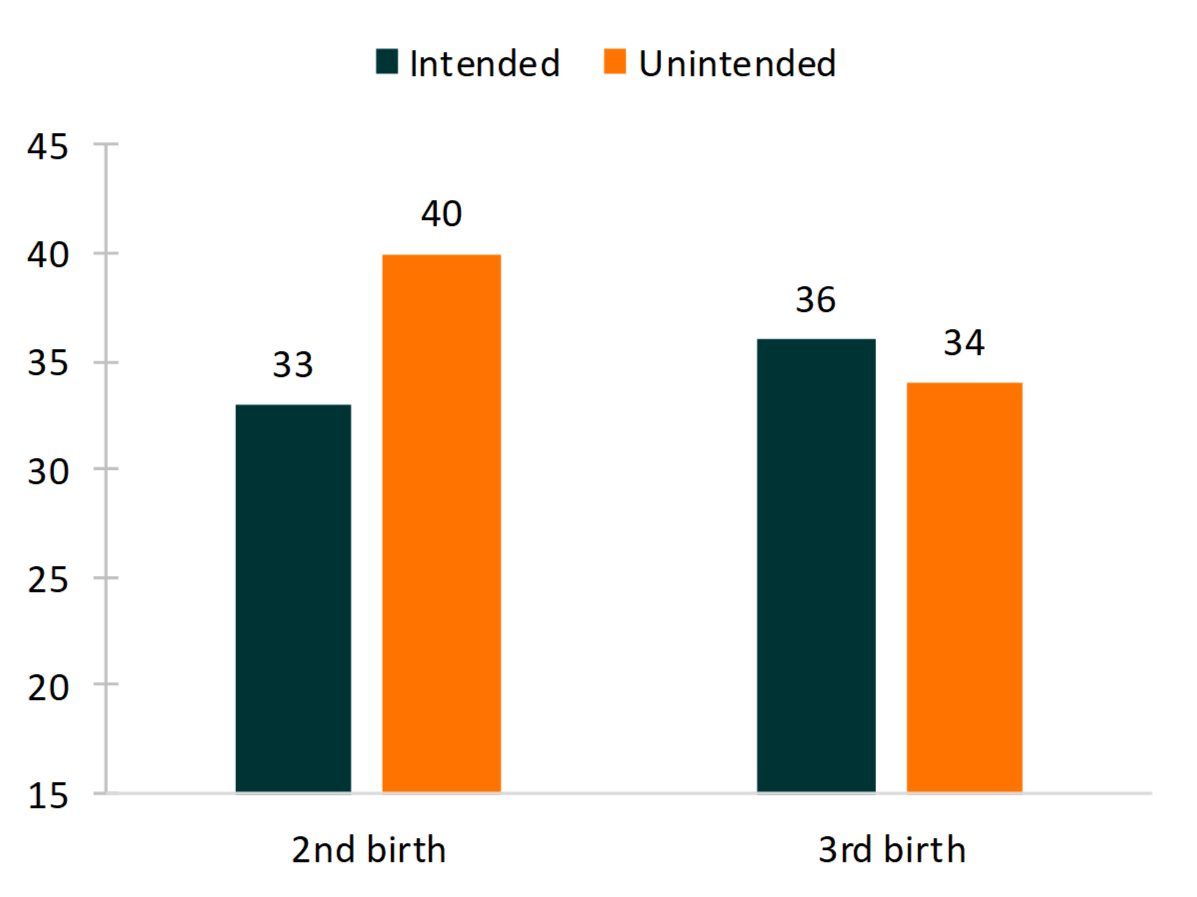Variation in Birth Spacing by Family Context
Family Profile No. 13, 2017
Authors: Karen Benjamin Guzzo
Variation in the context in which people have children may be associated with how closely parents space their births. In this profile, we use the National Survey of Family Growth (NSFG) to examine the spacing of births (the number of months between two consecutive births) among American mothers aged 15-44. We present overall trends in median spacing by birth order from 1988-2013 and detailed information on the spacing between second and third births by selected family and birth characteristics for mothers in 2013. This profile is a companion piece to FP-17-14, Variation in Birth Spacing by Maternal Characteristics.
Since the late 1980s, the median spacing between births has generally become slightly longer.
- The number of months between first and second births and second and third births was very similar, at 35 and 36 months, respectively, in 2013.
- The median spacing between second and third births increased 3-4 months since 1988.
- Birth spacing for fourth and fifth births was consistently shorter than spacing for second and third births across the period.
- Spacing between third and fourth births increased between 1988 and 2013 by three months, but spacing between fourth and fifth births decreased by two months.
Figure 1. Median Spacing since Last Birth by NSFG Cycle

Birth Spacing by Union Status at Prior Birth
- For second births, women who were single at their first birth had the longest median spacing, at 41 months.
- Spacing was similar for cohabiting and married women, at 34 and 33 months, respectively.
- For third births, women who were cohabiting at their last birth had births more quickly than their single or married counterparts, with a median spacing of 32 months.
- Single and married women had their third births just over three years after their prior birth.
Figure 2. Median Spacing for Second and Third Births by Union Status at Prior Birth, 2013

Birth Spacing by Intendedness of Prior Birth
- The median spacing between first and second births was shorter for women who intended their first birth (36 months) than for women whose first birth was unintended (40 months).
- Among those with third births, the opposite was true - spacing was slightly shorter for those with unintended second births (34 months) than those with intended second births (36 months).
Figure 3. Median Spacing for Second and Third Births by Intendedness of Prior Birth, 2013


“Shorter spacing between births…
was associated with a greater number of children”

Birth Spacing and Number of Children
Shorter spacing between births was associated with a greater number of children (not shown).
- Between their first and second births, mothers with only two children had a median spacing of 40 months, whereas those with five or more children had a median spacing of 24 months.
- The median number of months between the second and the third birth was 39 for mothers with only three children, however, it was 25 for mothers with five or more children.

Data Sources
- National Center for Health Statistics (NCHS). (2016). 1988, 1995, 2002, 2006-2010, 2011-2013, 2013-2015 National Survey of Family Growth Public Use Data and Documentation. Hyattsville, MD: CDC National Center for Health Statistics. Retrieved from https://www.cdc.gov/nchs/nsfg/index.htm
Suggested Citation
- Guzzo, K. B. (2017). Variation in birth spacing by family context. Family Profiles, FP-17-13. Bowling Green, OH: National Center for Family & Marriage. Bowling Green, OH: National Center for Family & Marriage Research. https://doi.org/10.25035/ncfmr/fp-17-13

This project is supported with assistance from Bowling Green State University. From 2007 to 2013, support was also provided by the U.S. Department of Health and Human Services, Office of the Assistant Secretary for Planning and Evaluation. The opinions and conclusions expressed herein are solely those of the author(s) and should not be construed as representing the opinions or policy of any agency of the state or federal government.
Updated: 04/06/2021 01:32PM

